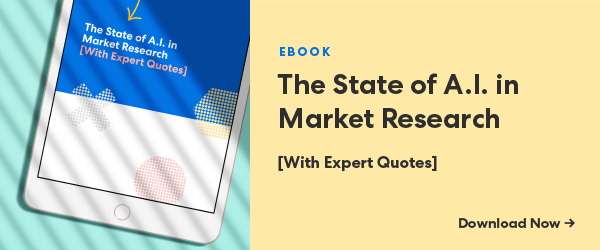
Kevan has an aggressive love of writing, coffee, and bagels. He's a member of the marketing team.

Kevan has an aggressive love of writing, coffee, and bagels. He's a member of the marketing team.
Almost 20 years have passed since 17 software development practitioners drafted the original Agile Manifesto at the now legendary meeting in Snowbird, Utah, in early 2001. Today, as organizations seek to innovate rapidly, test new ideas, and uncover insights straight from the consumer, agile methodologies are more relevant than ever.
While any organization and team can adopt agile principles, the types of frameworks that customer insights teams adopt can be wildly different depending on individual objectives, needs, and deterrents.
So, let’s take a closer look!
Agile frameworks are specific approaches toward research in product development based on agile principles. While every insights team can benefit from adopting these principles, methodologies like Scrum and Kanban are more suitable for small groups. At the same time, teams should use LeSS and SAFe for large and complex projects.
While the general philosophy of agile built these frameworks, they have their unique approach in helping teams adhere to agile principles.
There are many different agile methodologies in action. Whether it's feature driven development for agile software development or lean development for eliminating waste, why does it matter which one an insights team chooses?
According to the Annual Agile Survey, while most firms see organizational agility as a top-tier priority, only 25% of respondents believe their teams are truly agile. That stat suggests a discord in team research methodologies, which means that a framework with clear goals is in order!
Indeed, adopting agile processes requires discipline and may be difficult for organizations to follow through on. It’s therefore imperative for you to adopt an agile framework that aligns with your team’s needs and is something they can utilize in the long run and at scale.
Scrum is an iterative approach to product development with a small development team working in a series of short sprints to accomplish a focused set of project objectives. With more than half of all agile organizations adopting this methodology, according to Annual Agile Survey, Scrum is by far the most popular agile framework adopted by small teams.
With these pros and cons in mind, Scrum is often most suited for teams that:
The first step of Scrum begins by creating a backlog or a list of prioritized campaigns or projects that are known to be required. Before each sprint, the team selects a limited number of items from the backlog to complete and works solely on that list of items for the duration of the sprint (typically 2-4 weeks).
The second step is the sprint. During the sprint, the team conducts daily scrums at the start of each day to assess their progress and make any necessary adjustments.
The third step is at the end of the sprint. Here, the team conducts a sprint review with key stakeholders to go through what they achieved during the sprint and repeats the entire process in preparation for the next sprint.
Transparency. Daily scrums between the team and key stakeholders help keep every team member accountable for their assignments while also maintaining transparency with clients.
Easily respond to changing requirements. Working in short sprints allows for teams to quickly adjust their priorities based on new requirements or changes.
Increased motivation. Having team members complete small, measurable amounts of work helps keep them focused and motivated.
Chance for project delay. A product owner must plan Scrum sprints around the time taken to complete individual tasks rather than the overall project timeline. As such, they can quickly delay a project if they don't manage sprint planning well.
Need for experience. Since Scrum requires team members who can complete tasks within a very narrow time window, the framework is better suited for individuals with prior experience in their assigned roles.
Kanban is a visual workflow management tool that helps teams achieve continuous delivery of new product features. Initially developed by Toyota in the 1940s to optimize factory operations, today project teams across all industries use Kanban.
Kanban is best suited for teams that:
Favor a continuous delivery of services over sprint-based development
Can sustain a constant workflow with limited supervision
The Kanban method is built around a Kanban board, a visual layout that uses vertical columns to categorize tasks based on where they lie in the team’s workflow. When project managers layout duties visually, teams quickly take stock of performance and identify potential bottlenecks.
The first step of Kanban begins with creating a product backlog of tasks and items that need to be done, much like Scrum.
Next, the team starts on a task, and they move the task to the “doing” column.
Finally, when they complete the task, they move the task to the “done” column. Easy! But not quite.
Throughout this process, the Kanban method offers a continuous workflow. Unlike Scrum, which runs on short, successive sprints, the Kanban method emphasizes creating a smooth and continuous workflow. Kanban also limits the amount of work in progress.
To ensure a smooth workflow, a core tenet of Kanban is limiting the number of active items in progress at one time. Teams set hard limits on the number of items per stage and can only “pull” tasks from one step to another when there is available capacity.
Easy to understand and adopt. Since the Kanban methodology doesn’t require any specialized roles to administer, teams without any prior experience in Kanban can implement it easily.
Everyone is on the same page. Since Kanban visualizes every piece of work on a shared board, every team member can immediately understand the status of every project or task.
Lack of timeframe. Since Kanban doesn’t attach a time frame for each item on the board, it can be difficult for teams to estimate how long it takes for them to complete a project.
Risk of outdated Kanban boards. Since Kanban revolves entirely around the Kanban board, unnecessary delays can easily happen if teams are not diligent about maintaining the Kanban board.
Large-Scale Scrum (LeSS) is a scaled-up framework that helps organizations coordinate large projects while still preserving the agility found in small-scale Scrum teams.
Like Scrum, the LeSS process begins with developing a backlog consisting of all the critical research objectives in the project.
LeSS is best suited for teams that:
Have previously adopted the Scrum framework and have found it effective
Have key individuals that have experience with Scrum and can coordinate the efforts of multiple small teams
First, these objective or task breakdowns are assigned to individual small teams and tackled using the Scrum methodology.
At the same time, these individual teams also continue to collaborate closely with one another on any related objectives. While this may seem like a simple design, the application of LeSS in large market research teams is invaluable. LeSS team sizes can reach up to eight teams of eight people each, and LeSS Huge teams (an even larger framework) reach up to 2,000 people.
Easy transition from Scrum. Since LeSS is essentially a scaled-up version of Scrum, it’s relatively straightforward for teams already familiar with Scrum to transition towards LeSS.
Preserving agility. Under LeSS, individual small teams can still function with a great deal of autonomy, allowing the organization as a whole to remain Agile.
Requires a firm understanding of Scrum. Because LeSS teams involve the coordination of multiple Scrum teams, LeSS team leaders and members need to be intimately familiar with Scrum to function effectively.
The Scaled Agile Framework (SAFe) is a comprehensive knowledge base that incorporates a series of best practices to help organizations apply existing agile frameworks such as Lean, Kanban, and Scrum at different levels of the organization.
SAFe is best suited for teams that:
Want to implement a framework at an organizational level
Would like to transition from a traditional to an Agile environment
Some of the Scaled Agile Framework best practices include an economic view, building incrementally with fast-integrated learning cycles, and visualizing and limiting work-in-progress.
SAFe comprises processes at the team, organizational, and executive level of a consultancy, agency, or corporation.
At the team level, individual agile teams operate under different frameworks such as Scrum and Kanban.
At the organizational level, SAFe proposes using an Agile Release Train to help business owners coordinate the work of multiple agile teams and build a continuous pipeline of product increments.
The Agile Release Train (or ART) is the self-organized structure of individual teams (ranging from 5 to 12 teams altogether) that plan and execute projects in tandem. A common backlog and roadmap bind the teams in an Agile Release Train. One person usually leads these ARTs (aka the Chief Scrum Master) responsible for scheduling major events in the project and ensuring stakeholders' participation.
Finally, senior management coordinates the sequential release of different projects at the executive level, ensuring that they align these plans with strategic organizational goals and budgets.
Built for scale. SAFe focuses heavily on supporting enormous teams and is therefore suitable for companies to implement at an organizational level.
Balances between structure and agility. SAFe is designed to empower individual teams to remain Agile while maintaining top-down decision-making at an organizational level.
Highly structured. With every single process in SAFe being clearly codified, teams may find the approach too structured and lacking in flexibility.
Need for training. The SAFe methodology requires that the organization trains key executives in SAFe and various Agile principles, increasing the time taken to implement the framework.
Every team dreams of becoming truly agile, but choosing the correct agile framework can make or break your organization’s agile transformation efforts. Choose wisely.
Want your team or organization to adopt an agile framework? Check out our eBook, including tips on investing in agile tools like AI.
© 2024 | All rights reserved